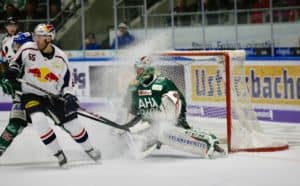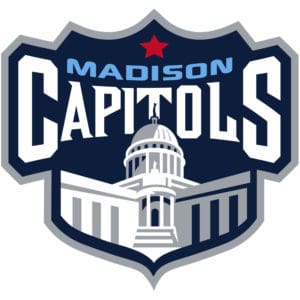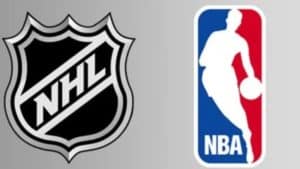Circulating every August and September are rampant rumors about teams shutting down or “going dark” because of low roster numbers. TJHP covers these situations because they are newsworthy.
Not with the intention of trying to facilitate more problems for a league or organization or to create any sort of a shock factor. It is covered because it matters.
Electronic communication and social media allow these rumors to spread like wildfire. However, like the old Telephone Game, the information changes slightly with each communication and there is no anchor of facts to which people can refer. Allowed to go unchecked, a rumor can become a self-fulfilling prophecy of doom for a team that otherwise might have made it.
Players text each other and post warnings via social media to not go to a certain organization because of these low numbers. Because leagues and teams refuse to comment on the situations, the information is rarely clarified until (a) a team simply disappears from a schedule or (b) a team doesn’t disappear from a schedule.
On Sunday TJHP posted a story about the Utica Comets 18U team shutting down, the Connecticut Nighthawks United States Premier Hockey League (USPHL) Premier Division team missing its Sept. 28 game because of low numbers, and the Valley Junior Warriors Eastern Hockey League Premier team playing a game with 10 skaters, one below the number required by USA Hockey.
In the pursuit of information on those three teams, EHL Director of Communications, Neil Ravin, was the only person to get back to TJHP. His response was, “The league has been in constant contact with the Valley Jr. Warriors in regards to their low roster numbers. At this time, there is no concern for the team’s future.”
At the risk of throwing the EHL and Ravin under the bus for cooperating, the answer isn’t exactly full of information. But in the public marketplace, and taken at face value, it appears the EHL Executive Director and Board of Directors have reason to believe the Valley Jr. Warriors EHLP team will survive. That is a positive thing compared to no comment.
The next step in the future will be to get an answer to a follow-up question such as, “Why is it the Board feels optimistic?” There may be a very good reason the EHL feels that team is on solid ground but John Q. Public will never know, meaning prospective players will not know either.
To Ravin’s credit, and full disclosure the writer of this article hired him for his current position with the EHL, he understands that the marketplace would be better with more information from teams and leagues versus no information.
Baby steps. TJHP got a league official to comment so we feel that is progress. As TJHP’s reputation grows, and people trust that we’re not out to kick people when they are down and jump on rumors just to help fuel them, more team and league officials will talk to us. Our competitors have clear biases toward the North American Hockey League and toward the USPHL and EHL.
The truth is some teams and leagues don’t want to comment as they know that acknowledging there is merit to a rumor may be the death knell for that particular team. Our point is, “Why would that be a bad thing?” But the other truth is most teams or leagues wouldn’t comment even if the team has players on the way will make it. I believe the reticence to speak to websites or other content providers is because for the past 10 years teams and leagues have been skewered publicly with no chance to comment – good or bad. In their defense, why would TJHP be any different?
Moving on to the solution portion of this article: As a former league director and commissioner I proposed, more than once, that teams make full, non-refundable league dues payments by May 1 of each year in order to be considered as members-in-good-standing for the following season.
This financial pledge hammers out two important items: (1) Proof the owner/operator has the capital to run a Junior team and (2) At the very least, a good gamble by the owner/operator that he/she has the staff in place to recruit and sign a roster of players who will show up at camp and pay tuition.
This is not specific to Tier III Junior hockey but 15U, 16U and 18U hockey also. All the age groups in the thick of the recruiting battle by Youth and Junior programs across the country.
The way I saw it as a former Junior and Youth owner/operator, if I didn’t have $20k per Junior team, and at least another $20k for my youth organization (cash in the bank in April) to cover potential problems that may arise, I didn’t belong in the business. This doesn’t mean a projection of a $20k profit in a budget – I mean cash on hand when the previous season has concluded.
Things can go wrong and the answer of, “I didn’t budget for that,” leaves everyone in the lurch – players, parents, opponents, leagues, etc. Something as simple as a major blizzard while a Junior team is on the road can extend a trip by 2-3 days for extra bus rental, hotel and food. You could be on the hook for $15,000 just because of the weather. Then what?
It was also made clear in my experiences that hockey guys are passionate, and when they have an opportunity to form a team serve as a head coach, their passion may cloud the reality. An owner who stays on top of the coach’s recruiting process – and by that, I mean something as simple as receiving signed contracts and deposits – can counter-balance the potentially over-optimistic coach. It’s simple discipline, but when financial and roster discipline is enforced the owner is crushing dreams for the coach and the players who wanted to play for him.
Given the lack of financial obstacles in forming a team, it’s not a big surprise that someone has to lose the game of musical chairs come September. When this happens, especially at the Junior level, problems run downhill. Opponents have buses and hotel contracts in place, the latter of which generally are not refundable. Leagues have holes in their schedules that can impact playoff qualifying as unbalanced schedules can result. Especially for youth players, there may be no other viable, local option. A player may have passed on other opportunities and come September be faced with leaving home or just not playing travel hockey that year.
TJHP will continue to monitor and cover any situations – good and bad – that arise this year and in the future. It is hoped that communication channels open up and at least the information will be in the public domain. The ultimate goal would be that all teams present and accounted for in a league schedule, when the first puck drops for the season, be present and accounted for at the end of that season. Avoiding the early season collapse of teams, because of disciplined policies and rules, will keep players, parents, leagues, and opposing coaches from doing the September Scramble.











